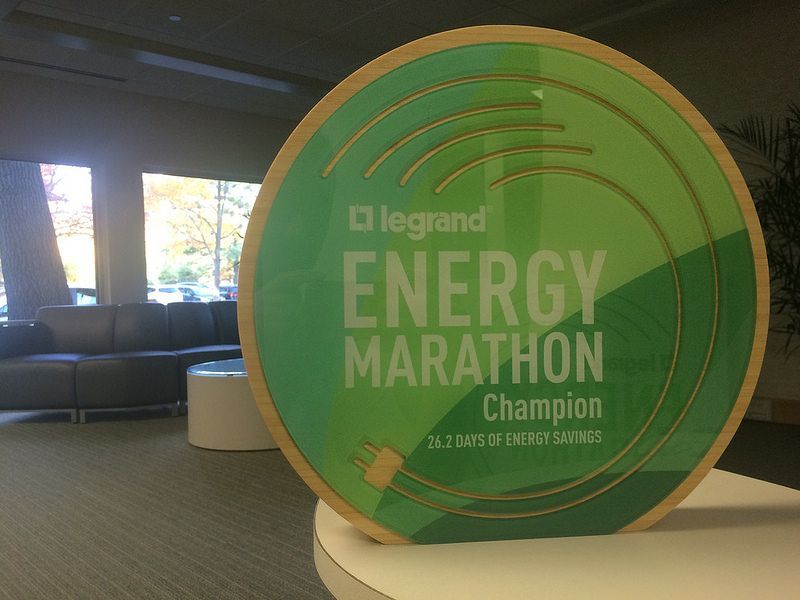Energy Marathon Helps Legrand Demonstrate Reduced Electricity Usage

Legrand shares how it reduced electricity use by 15.4 percent as a result of a 26.2-day Energy Marathon Provides Energy Marathon Day Toolkit and other no-cost tools to help company reduce energy
At the Better Buildings Summit recently, Legrand shared details on how it reduced total electricity usage by 15.4 percent during a company-wide Energy Marathon competition, which ran from October 1-27th, 2014. The Energy Marathon is an initiative Legrand developed as part of its ongoing commitment to energy efficiency and the Department of Energy’s (DOE) Better Buildings, Better Plants Challenge.
“We asked 2,500 employees across 18 North America sites to save as much energy as possible for 26.2 days,” said Susan Rochford, VP of Energy Efficiency, Sustainability & Public Policy at Legrand. “Our goal was to bring energy efficiency to the forefront, boost energy awareness and have fun!”
Rochford adds, “We built on the success of Legrand’s Power Down Day event held in 2012, where we achieved a total energy intensity reduction of nearly 25 percent in a 24-hour period. With the Energy Marathon, we saw great competition and sharing of best practices across our facilities, and we developed energy savings behaviors that will stick for the long term.”
Notable Energy Marathon statistics include:
• 15.4 percent reduction in electricity consumption
• 588,540 kWh saved
• 406 metrics tons CO2 saved
• $46,732 USD saved
• 20 percent reduction in kWh used per person
• Employee morale boost
Legrand, North America president and CEO, John Selldorff states that “the Energy Marathon focused every person in our business on creative ways to save energy – which is good for our environment, our customers and our business. I’m so proud of the innovative ideas and actions of our people. By doing even half of what we did during the Energy Marathon, our annual savings would exceed 4 million kWh and $325,000.”
Rochford provided details on keys to a successful Energy Marathon. For example, Energy Waste Citations were issued at the West Hartford, Conn. location if machines, printers, lights and computers were left on after hours. Departments were alerted about the violation, and actions were taken to remedy them. “On Day 1 of the Energy Marathon, 96 citations were issued,” says Rochford. “For the remainder of the marathon – 25 days – less than 10 citations were issued.”
Additional best practices include Steering Committee support from senior leadership, a multi-faceted communications and engagement plan, daily competition updates, and frequent events and contests to keep excitement high.
Legrand is committed to sharing key tools and resources, including a 16-page Energy Marathon Toolkit. These resources can be used by organizations to develop and implement energy efficiency programs for their businesses. All of these tools, including the Power Down Day Toolkit, A Guide to Submeter Deployment, and the Legrand, North America Energy Policy are offered at no-cost and are available at www.legrand.us/aboutus/sustainability.
Since 2009, Legrand, North America has reduced its energy intensity by more than 38 percent. The company has targeted itself to achieve by 2022 another 25 percent energy intensity reduction, and a 25 percent reduction in water consumption, from its 2012 baseline level. Legrand has also committed to achieve zero waste to landfill within this time period.
As well, for the first time, the Legrand Group was included this year in the 2015 Global 100 Index of the 100 most sustainable corporations worldwide; ranking in 48th place. The index includes the 100 companies worldwide most committed to sustainable development and which successfully reconcile sustainability and financial performance.










![Guide to the Canadian Electrical Code, Part 1[i], 26th Edition – A Road Map: Section 10 – Grounding and Bonding](https://electricalindustry.ca/wp-content/uploads/2022/11/Guide-CE-Code-2.png)





